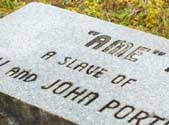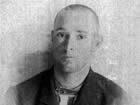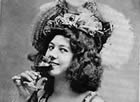Steamboat monopoly’s clever coup was a big mistake
Buying the connecting boat put a competitor out of business ... but left him free to use his boat to eat their lunch on an even more lucrative steamboat route.
EDITOR'S NOTE: A revised, updated and expanded version of this story was published in 2024 and is recommended in preference to this older one. To read it, click here.

An old hand-tinted postcard image showing Capt. Scott's flagship, the
Bailey Gatzert, under way up the Columbia in roughly 1905. [Larger
image:
1800 x 1415 px]
By Finn J.D. John — October 30, 2011
The executives in charge of Henry Villard’s Oregon Railway Navigation Co. no doubt thought they’d been very clever when they bought the riverboat Gold Dust in 1881. They could not have been more wrong.
ORN — formerly known as the Oregon Steam Navigation Co., or OSN — mostly owned all the steamboats on the Columbia River, and its rates were set accordingly. But it’s tough to enforce a monopoly running on a public resource such as the Columbia River; here and there, there were still a few independents. These would compete with OSN boats, driving down prices for passengers and freight and therefore hurting profits.
In 1881 there were two such boats that were particularly annoying for the big company: Capt. Uriah B. Scott’s screw-driven steamboat Fleetwood, and Capt. Ernest Spencer’s Gold Dust, which was also screw-driven. The Fleetwood brought passengers from Portland to the bottom of the Cascade rapids — where Cascade Locks would be built a few years later; the Gold Dust picked them up from there and carried them on to The Dalles.
By snapping up the Gold Dust, ORN had put both competitors out of business. There was nothing at the Cascades — just a couple ferry docks and a portage road. Theoretically, one could take the Fleetwood to the Cascades and then transfer onto an ORN boat to The Dalles ... one could, that is, if the Sherman Antitrust Act hadn't been several dozen years in the future. There was nothing to prevent ORN from refusing to serve people who had taken passage to the Cascades on a competitor's boat. And nobody was going to book passage to the Cascades if he or she would be unable to continue on to The Dalles, right?

Captain Uriah B. Scott’s prop-driven steamboat Fleetwood under
way
in Puget Sound in the 1890s. About ten years before this image
was
made, the Fleetwood was the fastest and most popular boat on
the
Portland-Astoria route. (Photo: University of Washington
libraries) [Larger image: 1200 x 950 px]
Right. Scott, the sole remaining independent boat captain, found himself running a line for which there was no market. What to do?
It’s not clear what ORN thought he would do. Maybe they didn’t think beyond just scoring this point. But what they should have thought about was the Fleetwood itself.
Underestimating Oregon's best naval architect
Scott had designed the Fleetwood himself, and Scott was a gifted naval architect — probably the best designer of steamboat hulls in Oregon history. This was the fellow who’d eaten the lunch of the Willamette River steamboat monopoly, the People’s Transportation Co., several years earlier, and done it with the Ohio, a boat so crude and ugly that it had made him an object of ridicule — until he launched it and they realized it could haul freight in water less than a foot deep. (Here's a link to that story.)
Now he’d built a boat for the Columbia, and done it — in typical Scott style — in an unconventional way. He’d built it with a propeller drive instead of the more traditional sternwheel configuration. It was big, it was luxurious and it was fast — oh, yes, this one was definitely built for speed and for deep water. In fact, it was built to cost ORN a lot of money in lost sales.

Remains of the steamboat Fleetwood on Vashon Island in 1908. The
boat was abandoned in the late 1890s, then deliberately beached on
the
island and left to rot away.
(Photo: Asahel Curtis/University of
Washington Libraries) [Larger image: 1200 x 1032 px]
But Scott appears to have made a mistake by putting it on the Cascades run — which he may have done as a favor to help his friend and fellow Ohioan, Capt. Spencer.
By forcing Scott to move the Fleetwood, ORN gave him the opportunity to correct this mistake, if such it was, without leaving Spencer high and dry. And correct it he did.
Soon the Fleetwood was making the run from Portland to Astoria. This was a run for which ORN charged passengers $5 — this at a time when many working Oregonians made less than $5 a month. Scott priced his service at $2.
Crickets started chirping in the Oregon Railway Navigation ticket booth.
ORN realizes its mistake
Not only was the Fleetwood far cheaper than the competition, it was more luxuriously appointed and considerably faster. Passengers shaved several hours off their travel time by choosing Scott’s boat. In fact, Scott probably could have charged $6 a head and still packed ‘em in, because the Fleetwood represented a premium service.

This is the front cover of the musical score to "The Bailey
Gatzert March." The entire score can be found in the
University
of Oregon's special collections. [Larger image:
800 x 1294 px]
The competitors settled into a new equilibrium on the lower river, in which ORN was for once the junior player. The erstwhile monopoly had to console itself by squeezing the farmers and traders who rode its boats and trains back and forth from The Dalles and points east — a line along which ORN controlled all the portage routes and railroads, and therefore couldn’t really be challenged.
But the Portland to Astoria route was the biggest and most profitable direct run on the river, and ORN probably found itself wishing it had left Scott alone on his Cascades run.
Scott forms his own steamboat company
Scott subsequently formed a company called the Columbia River & Puget Sound Navigation Company, expanding to provide service in the Seattle-Tacoma area as well. It was a very successful company, and as the era of the sternwheel riverboat came to an end, it operated the most famous riverboat on the Columbia — the enormous, plush and speedy Bailey Gatzert, known to those who found its wake excessive and annoying as the “Daily Bastard,” the only Oregon riverboat that’s actually had a piece of music written for it.
The Bailey Gatzert made its last run in 1917, by which time the Columbia River sternwheeler era was definitely over and had been for several years, replaced by freight and passenger service on the rails.
(Sources: Wright, E.W. Lewis & Dryden’s Marine History of the Pacific Northwest. Portland: Lewis & Dryden, 1895; Newell, Gordon. Pacific Steamboats. Seattle: Superior, 1958; Hulme, Kenneth S. “The Ubiquitous Captain Scott,” A Place Called Oregon, https://guesswhoto.com)
TAGS: #PEOPLE: #doers #mavericks #largerThanLife #inventors :: # #cultureClash #marine #surpriseUpset #underdog #hubris :: #152 #153
-30-











